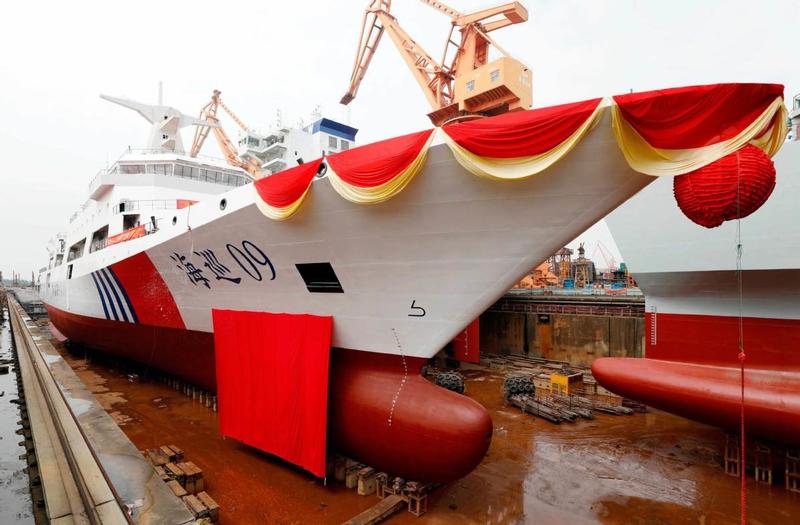 China's largest maritime patrol vessel was launched at Guangzhou Wenchong Shipyard, in Guangzhou, Guangdong province, on Sept 29, 2020. (PHOTO / CHINA DAILY)
China's largest maritime patrol vessel was launched at Guangzhou Wenchong Shipyard, in Guangzhou, Guangdong province, on Sept 29, 2020. (PHOTO / CHINA DAILY)
China's largest maritime patrol vessel, which was launched in a shipyard in Guangzhou, Guangdong province, on Tuesday, is destined to help improve maritime traffic governance, officials said.
Haixun 09 is expected to serve as an important platform for law enforcement, emergency coordination and command and pollution prevention
Haixun 09, built at China State Shipbuilding Corp's Guangzhou Wenchong Shipyard, will be managed by the Guangdong Maritime Safety Administration. It is expected to go into service next year.
The 165-meter maritime safety patrol vessel has a displacement of 10,700 metric tons and speed of more than 25 knots (46 kilometers per hour), said Yan Peibo, the ship's chief construction engineer.
READ MORE: Two marine satellites to hit orbit shortly
It can sail more than 10,000 nautical miles (18,520 kilometers) at an economical speed of 16 knots and make voyages of more than 90 days.
The ship has a helicopter landing pad and a data center with multiple sets of satellite communication systems, including China's Beidou Navigation Satellite System. The ship's construction started in May 2019.
Haixun 09 is expected to serve as an important platform for law enforcement, emergency coordination and command and pollution prevention, the administration said in a statement.
It will help strengthen maritime traffic control and emergency support, ensure safe and smooth maritime transport and safeguard the country's maritime interests, said Cao Desheng, director of the Maritime Safety Administration of China.
ALSO READ: China launches satellite for marine observation
It will also be an important tool for emergency management and cooperation in the global maritime safety sector, he said. Plans also call for expansion of the maritime patrol fleet capable of long-range, deep-sea operations by banking on technological innovation.
Haixun 09 has a smart engine room system capable of real-time monitoring of the main propulsion system and power generators. The ship also uses low-sulfur fuel and has a system to remove nitrogen oxides, often found in engine exhaust.
China currently has in service three maritime safety patrol vessels with a displacement of over 3,000 metric tons.


